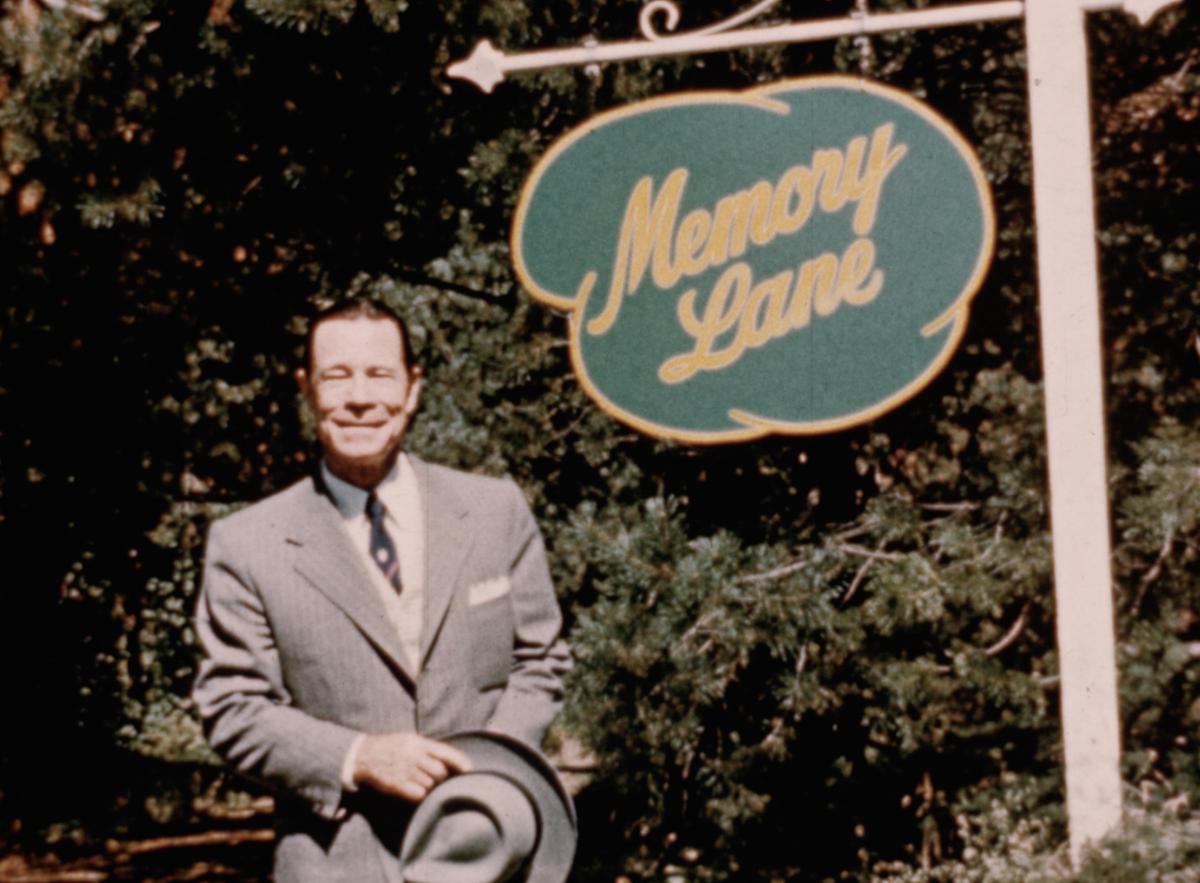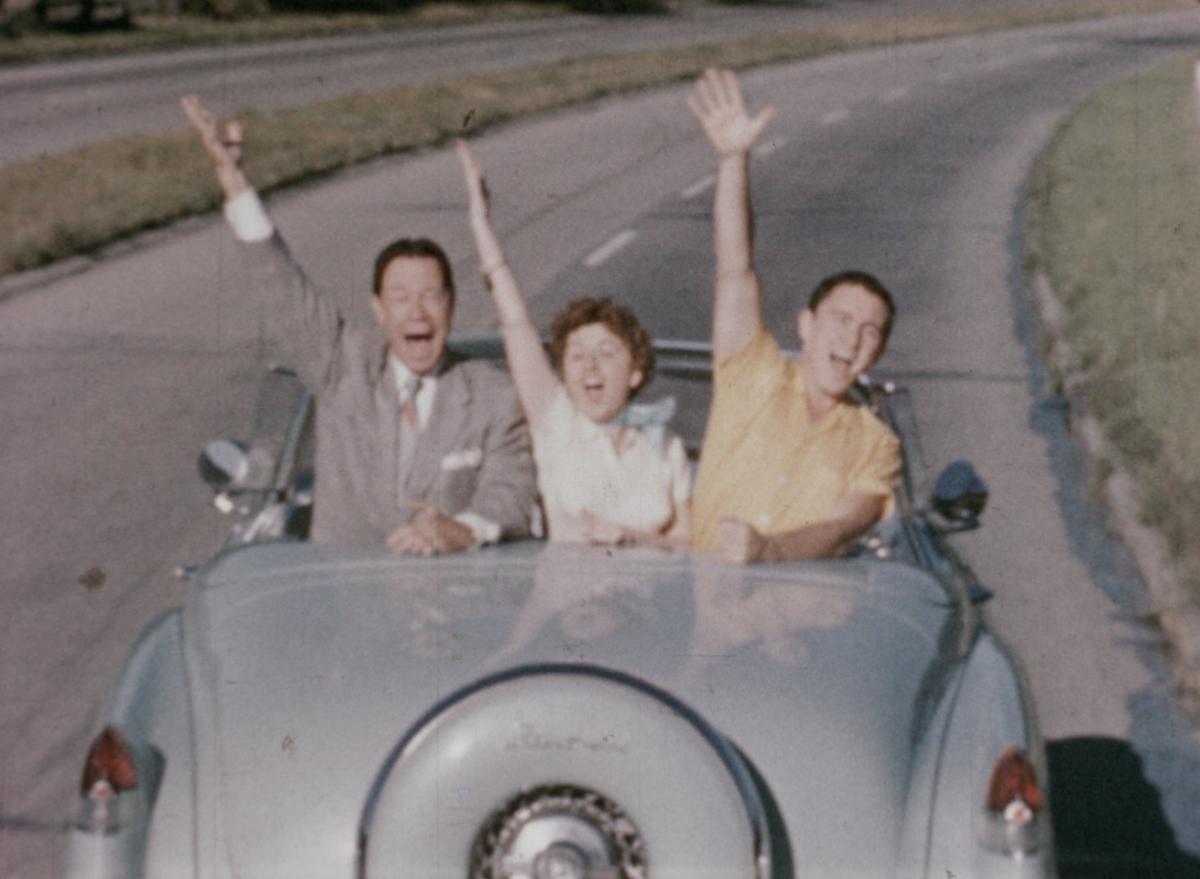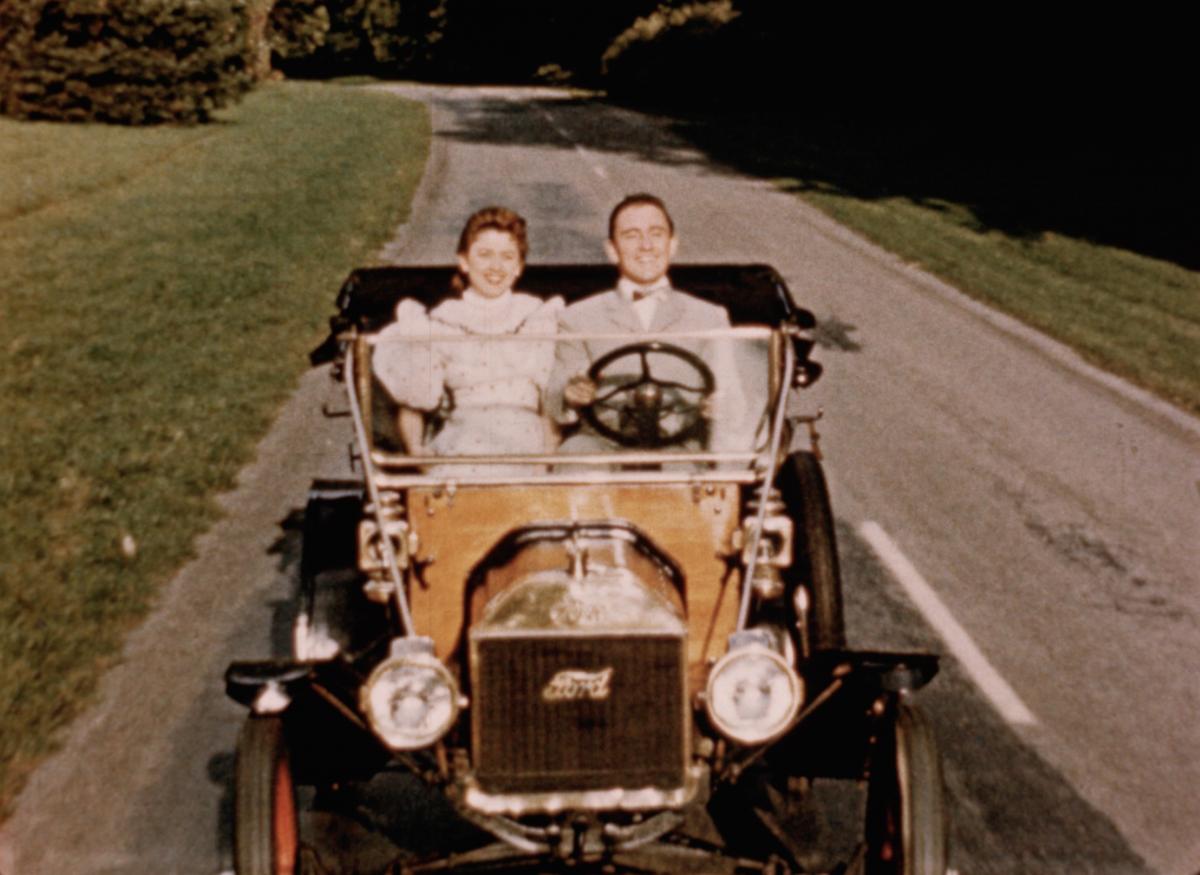Nostalgia is a powerful force in advertising. As long as advertisements have existed, harkening back to the “good ol’ days” has been a time-honored selling tradition. If it did not work, we would not do it; to the present day, companies invoke nostalgia to make their products more desirable. An example of this advertising technique is the Milestones of Motoring, a film released in 1954 that plays to the audience’s nostalgia for the 1920s. The film features many acting sequences and musical numbers. You can watch the black and white version of Milestones of Motoring in our Cinecraft collection or a color version here.
 From an educational standpoint, Milestones of Motoring takes the viewer through the early history of automobile design, manufacturing, and sale. The film roughly centers around the history of the automotive industry from 1898 to 1929. Milestones of Motoring was sponsored by the Standard Oil Company of Ohio (SOHIO). SOHIO was a frequent client of Cinecraft, and you can view many of their works in Hagley’s Cinecraft Production Films. The film was created to advertise the SOHIO brand and centers on SOHIO’s contributions to the development of gasoline. Also, due to SOHIO’s location in Cleveland, Ohio, the film focuses on the contributions of Ohioans to the history of automobiles. Many famous early car brands, such as Winton, Packard, and Studebaker, were either first manufactured, designed or generally had ties to Ohio. Many of these cars are shown and operated in the film, making it a great time capsule for viewing the designs of American cars from the 1910s and 1920s. What is viewed as early car history to us is recent car history to the intended Milestones audience; original viewers were only 30 years removed from the era of the aforementioned vehicles. Because of that, this film was likely less of a history lesson and more of a nostalgic “trip down Memory Lane” in the 1950s. The film featured a sign labeled "Memory Lane" on one of the sets.
From an educational standpoint, Milestones of Motoring takes the viewer through the early history of automobile design, manufacturing, and sale. The film roughly centers around the history of the automotive industry from 1898 to 1929. Milestones of Motoring was sponsored by the Standard Oil Company of Ohio (SOHIO). SOHIO was a frequent client of Cinecraft, and you can view many of their works in Hagley’s Cinecraft Production Films. The film was created to advertise the SOHIO brand and centers on SOHIO’s contributions to the development of gasoline. Also, due to SOHIO’s location in Cleveland, Ohio, the film focuses on the contributions of Ohioans to the history of automobiles. Many famous early car brands, such as Winton, Packard, and Studebaker, were either first manufactured, designed or generally had ties to Ohio. Many of these cars are shown and operated in the film, making it a great time capsule for viewing the designs of American cars from the 1910s and 1920s. What is viewed as early car history to us is recent car history to the intended Milestones audience; original viewers were only 30 years removed from the era of the aforementioned vehicles. Because of that, this film was likely less of a history lesson and more of a nostalgic “trip down Memory Lane” in the 1950s. The film featured a sign labeled "Memory Lane" on one of the sets.
Milestones of Motoring’s entertainment value is its strong cast and song choice. The film’s acted sequences star Joe E. Brown, Merv Griffin, and Rita Farrell. Joe E. Brown, at that time, was famous for his comedy work and is best remembered today for his role in the film Some Like It Hot. Merv Griffin is an interesting case, the film role came towards the beginning of his illustrious career. He would become best known for creating popular game shows Jeopardy and Wheel of Fortune. Finally, there is Rita Farrell, or Rita Schour, a nightclub and television dancing star. Farrell recorded several songs with Griffin and later performed on his network television show.

In this film, the actors participate in small sequences where Brown, “The Man Who Saw It All,” attempts to sell or demonstrate a car from the era to prospective buyers Griffin and Farrell. There are also short sequences illustrating historic moments in car history. My favorite sequence is towards the end of the film, where Brown directly addresses the audience and lists trends and popular culture moments from every year from 1925 to 1929. This would have been a fun, nostalgic trip for people in the 1950s. However, watching it in 2023 is very funny, as many rapid-fire references are unknown to a modern audience.
 When not acting out scenes from the history of automobiles, the actors sing songs about cars that were written and released in the era being discussed. There are several musical numbers throughout the film. Several of these numbers feature the actors driving in the cars referenced in the song lyrics. My personal favorite song in the film is “Breezin' Along with the Breeze,” which is sung during the opening and closing sequences of the film. Griffin and Farrell sing together well; you can still find their other collaborations on music streaming services. “Breezin’ Along with the Breeze” is a smart choice for playing on nostalgia. The song was originally released and popularized in 1926. However, it was still being recorded by artists and featured in films into the 50s, making it a nostalgic and contemporary song choice.
When not acting out scenes from the history of automobiles, the actors sing songs about cars that were written and released in the era being discussed. There are several musical numbers throughout the film. Several of these numbers feature the actors driving in the cars referenced in the song lyrics. My personal favorite song in the film is “Breezin' Along with the Breeze,” which is sung during the opening and closing sequences of the film. Griffin and Farrell sing together well; you can still find their other collaborations on music streaming services. “Breezin’ Along with the Breeze” is a smart choice for playing on nostalgia. The song was originally released and popularized in 1926. However, it was still being recorded by artists and featured in films into the 50s, making it a nostalgic and contemporary song choice.
Milestones of Motoring is fun to watch and is an example of using nostalgia in marketing. A modern audience no longer has specific nostalgia for this era, making the technique interesting to observe. The film takes viewers through the early history of automobiles, focusing on the contributions of people from Ohio. The acting is charming, and the singing is so catchy it’ll stick in your head before you know it. Check this film out and have a great time breezin’ through the history of automotives!
Edward Redmond is the Film & Video Processing Intern at Hagley Museum and Library. He recently graduated from the University of Delaware and is currently getting hands-on archival experience before pursuing a Master of Library Science degree.
